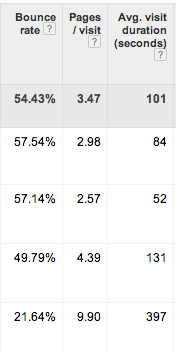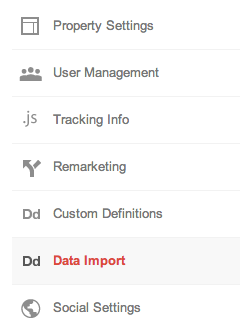For January’s series post we are taking a look at our PPC wishlists. What tools do we all wish we had available to make our lives that much easier? Where do our chief frustrations stem from and what band-aid solutions are we using to fix them?
—
One of my biggest frustrations with PPC has always been in dealing with accounts where conversion tracking wasn’t straightforward. PPC with conversion tracking is elegant, simple and logical. You work out which keywords are driving sales at low costs and optimize around them. PPC without conversion tracking is complicated and messy. It requires workarounds and estimations that leave a lot of room for optimization on the table. Therefore my PPC wish is for there to be a beautifully integrated system for tracking and attributing leads/sales from start to finish. As that is but the fevered dream of a madman (at least for now) here’s how I get round that problem with my current clients.
1. Call Tracking
Probably the most common way to get around the problem of conversions happening on the phone is, surprise surprise, actually tracking those calls back to their source. There are a lot of different call-tracking options available that will show you data from the account to the keyword level depending on cost and complexity.
One of my clients currently makes use of call tracking to see how many guests have called to book a night in their hotel. Our system uses a custom tag for all the ads in each campaign and dynamically shows that phone number using a piece of JavaScript. Visitors can then be tracked back to the campaign they came from and the system links up with the hotel’s reservation line, where the agent can say if the call ended in a room booking or not. This allows us to weed out campaigns that generate less valuable customer service calls and increase bids & budgets on campaigns with strong booking numbers.
Here’s a list of a few different call-tracking companies that you might want to consider:
I also recommend you check out this article from Brad Geddes about the types of call tracking available, this article from Andrew Lolk about why call tracking is essential for PPC agencies, and our call tracking Webinar from November.
If you aren’t inclined to sign up for an expensive call tracking service (although they really aren’t that expensive), you can also make use of Google Call Extension forwarding numbers to track call durations. Although not as elegant as actually tracking whether a call was booked or not, you can assign a conversion to all calls over a specified period of time – let’s say 60 seconds – and then multiply that by the percentage of callers who typically end up buying from you over the phone.
2. Analytics Metrics
If I have absolutely no way of tracking sales or leads back to the keyword level, I use Google Analytics metrics to influence most of my strategy on an account. This is kind of a messy workaround, but works better than nothing. By linking AdWords and Google Analytics you can import four key metrics:
- Bounce Rate
- Pages Per Visit
- Time on Site
- Percentage of New Visitors

I tend to use a combination of bounce rate and time on site to work out if a keyword is bringing in good traffic. By slowly tweaking bids in favour of low bounce rate, high time on site keywords positive trends start to emerge in overall performance levels. Of course, the metrics you use for this will depend on what you’re end goal is – new visitors might be more important for branding exercises and time on site for direct response.
For a detailed look at how to use Google Analytics metrics for judging ads and changing bids check out this article.
3. Long Term Thinking
As much as I dislike comparing performance over time due to issues like seasonality – you can still look to it as a yardstick for success. Were things better this month than last? The big changes you made probably helped if so. The main trouble with this approach is that if you do too many things in one month, as many an eager young PPCer might want to do, you don’t know what helped and what made things worse.
As a side note, for accounts without conversion data I tend to heavily focus on click through rate and cost per click metrics over time – mainly as they are some of the only metrics I can focus on – but also because accounts with above average CTRs will be rewarded with better quality scores and cheaper clicks.
4. Back End Data
If you have access to any kind of back end data, trawling through it for clues about your best performing campaigns can help a lot. I have an ecommerce client that does all of their business over non-call-tracked phone lines. Every week I get sent a detailed report of sales by product category. I can then multiply the revenue by the percentage of traffic to that product page that comes from PPC and compare against costs. It’s a total hack and it’s not perfect, but it helps give us a broad picture of what’s going on.
5. Universal Analytics
On the subject of back-end data, if you do have a longer sales cycle that uses third party platforms, or you want to be able to link in-store purchases back to your PPC campaigns, consider making the upgrade to UA. Check out the description in this blog of how you might be able to make use of such a system, and see this post by our very own Carrie Albright for more info about UA.
As always if you have any thoughts or comments, let us know in the section below!




